Camouflage art of caterpillars
The shape is easily confused with snakes, snails or plants that can help caterpillars camouflage and defend themselves.
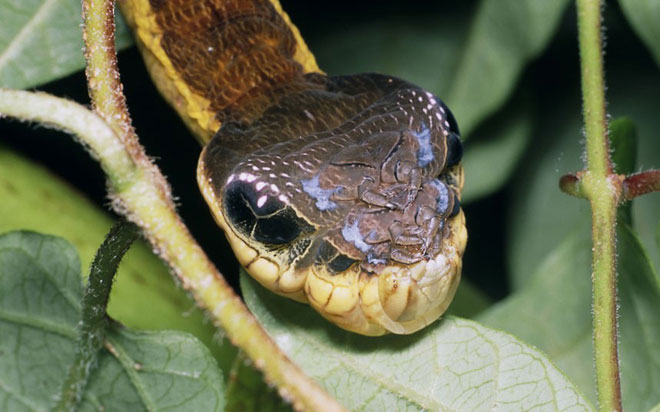
Caterpillar Hemeroplanes triptolemus is a moth larvae of the Sphingidae family, often found in parts of South America, Africa and Central Asia.In the form of larvae, Hemeroplanes can grow and expand body parts, especially the front part, making them look like a small snake.
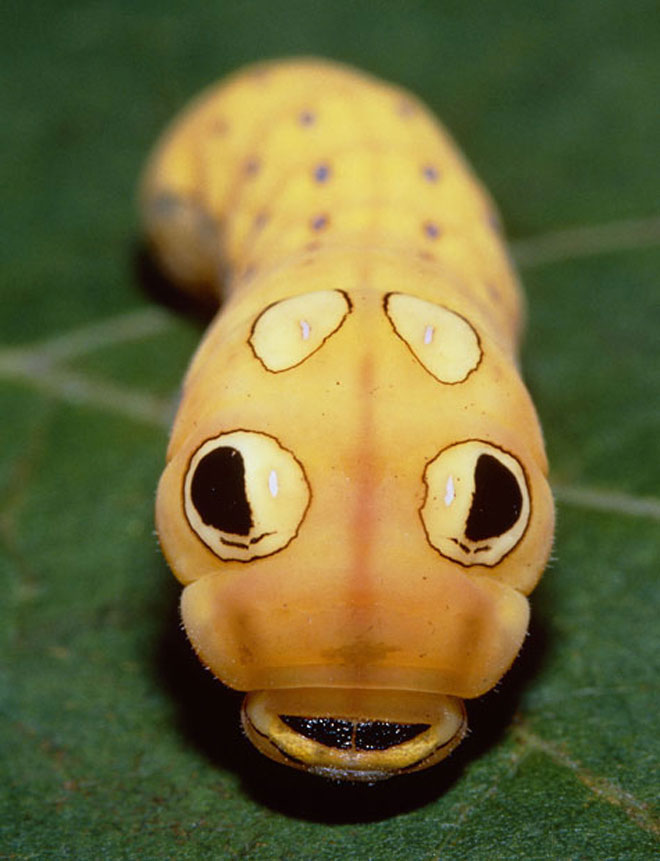
Papilio troilus's larvae have large eyes, making them look like a terrifying and opportunistic predator.
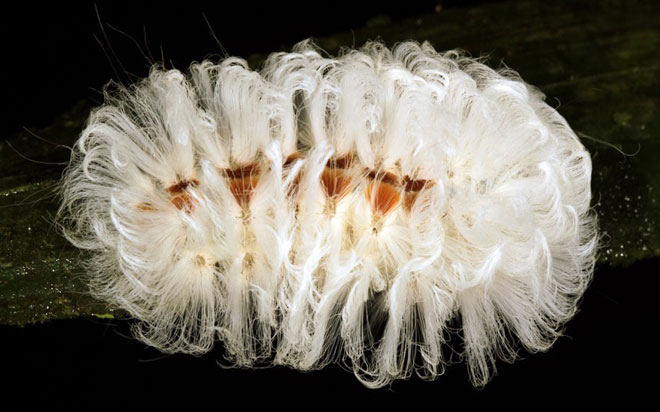
This caterpillar has an eye-catching shape with long, white, hairy tufts.However, this is a feature that helps them camouflage poison.
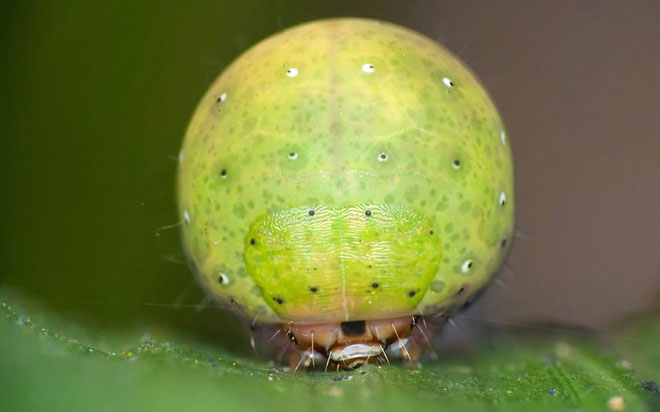
The caterpillar's belly is large, green and overlaps its true head.This feature is easy to confuse caterpillars with an unripe strawberry, which helps them avoid the risk of being attacked by birds.
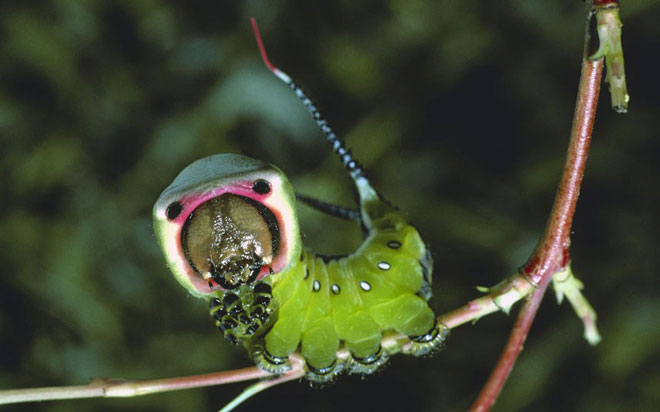
When disturbed, the body of the moth's larvae Cerura vinula will bulge, revealing a large red head and black false eyes.The two small tassels at the back stretched across the back, the tracts were pushed out from the tip, carrying a strong and unpleasant odor.If this action is not enough to intimidate the enemy, moths can even spray acid.
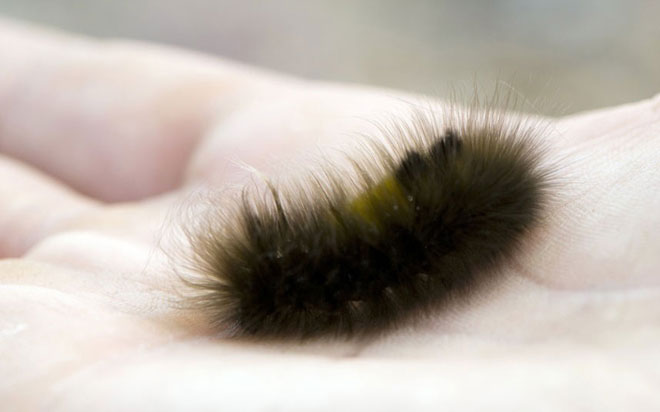
To cope with the cold weather, caterpillars Gynaephora groenlandica will secrete a protein that can help the cell to not completely freeze.The body is covered with thick fur that can also help them limit heat loss.

Hyalophora cecropia caterpillar with a colorful pointed knob.

Acharia stimulea moth has two characteristic colors, green and brown.Thorns containing irritant toxins are an advantage that helps them escape the enemy.When exposed to hair or thorns on the caterpillar's body, the skin on the body becomes swollen, feels painful and even nausea.

Blobs and bristles cause Orgyia leucostigma to be confused with many plants.

Papilio cresphontes caterpillars are characterized by two small red horns, extending forward and fragrant.
- Caterpillars fake snakes escaping predators
- Caterpillars have a snake-like shape
- Caterpillars fake ants tricking artificial intelligence
- Caterpillars wear spider mite
- The US military tested the 'invisible' camouflage suit for snipers
- Caterpillars are evolving to cope with climate change
- Unique 'camouflage' method for watchtowers during World War I
- Production of ink-inspired camouflage material
- Beautiful photo: Fish spike out of terns
- The ability of extreme animal camouflage
- Admire the extreme camouflage art of animals
- Stealthy assassins in nature
 Why do potatoes have eyes?
Why do potatoes have eyes? 'Tragedy' the world's largest carnivorous life: Death becomes ... public toilet
'Tragedy' the world's largest carnivorous life: Death becomes ... public toilet Tomatoes were once considered 'poisonous' for 200 years
Tomatoes were once considered 'poisonous' for 200 years Detecting microscopic parasites on human face
Detecting microscopic parasites on human face